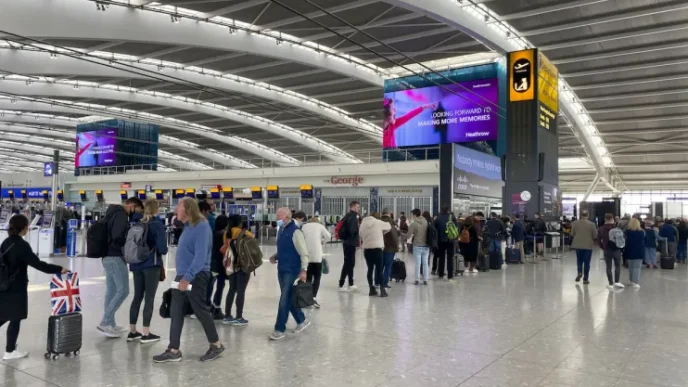Social media was once celebrated as a revolutionary force for authentic human connection. It promised to bring people closer, democratize information, and give everyone a voice. But that optimism now feels like a relic of a more innocent digital age. Today, timelines are dominated by AI-generated personas, clickbait outrage, deepfake videos, manufactured virality, bot networks, and algorithmically engineered propaganda. Authenticity—the foundation of meaningful communication—has become so diluted that many users are now asking a profound question: What is the point of social media when everything is fake?
The Era of Synthetic Reality
Since 2023, the rise of consumer AI tools has supercharged social media manipulation. What once required specialized skills and coordinated troll farms can now be executed by a teenager with a smartphone and internet connection. Realism and deception now scale at industrial levels.
- AI influencers like Lil Miquela attract millions of followers and lucrative brand deals—despite being entirely fictional.
- Deepfake scams use cloned voices and faces to impersonate real people, damaging trust and enabling fraud.
- AI comment bots flood platforms like X (Twitter), TikTok, and Facebook to hijack narratives and push political agendas.
- Cheaply generated misinformation circulates faster than fact-checkers can debunk it.
Reality isn’t just distorted—it’s being replaced. We are entering what geopolitics analysts now call the “post-truth media ecosystem.” In it, the perception of truth is no longer tied to evidence, but to emotional resonance, repetition, and algorithmic reach.
A Collapse of Digital Trust
As fake content proliferates, user trust is disintegrating. The erosion goes beyond politics and news. Everyday users—students, professionals, even grandparents—now suspect that everything they see online is manipulated, staged, Photoshopped, or AI-generated.
Recent digital behavior studies reflect a radical shift:
- 42% of Gen Z users say they post online only to maintain “appearance,” not connection.
- More than half of all U.S. adults now believe social media causes more harm than good.
- One in three users have reduced daily activity due to AI misinformation fatigue.
Instead of being a space for self-expression, social media has become a performance arena, where image beats identity and virality outranks vulnerability.
Engagement Algorithms Reward Deception
The crisis didn’t happen by accident. The business model of social media platforms is the root cause. Engagement algorithms prioritize emotional reaction—anger, fear, shock, desire—because they keep users clicking and scrolling. And fake content performs exceptionally well because it can be engineered to trigger those reactions.
- Outrage beats nuance.
- Sensation beats truth.
- AI-generated beauty beats reality.
- Conspiracy beats context.
- Bots don’t sleep—but humans do.
When truth is no longer profitable, platforms quietly allow manipulation to flourish. Misinformation is not a glitch. It’s a feature of ad-supported attention platforms.
AI Has Made It Worse—and It Will Get Worse Still
If deepfake videos and fake influencers feel alarming now, they’re just Phase 1. The next 24 months will bring:
- Fully autonomous bot swarms capable of generating and distributing coordinated propaganda in real time.
- Personalized influence operations using psychological profiling to target your exact fears and beliefs.
- Synthetic newsrooms, generating entire online media outlets using LLMs—without a single human editor.
- Hyper-realistic AI avatars that interact in real-time video calls, indistinguishable from real people.
Reality has never been easier to counterfeit.
So What’s the Point of Social Media Now?
Maybe social media is no longer about truth—but about control. It shapes culture, elections, financial markets, and even war narratives. Governments weaponize it. Corporations exploit it. Individuals curate false selves to survive in it.
Some users have responded with quiet rebellion:
- Digital minimalism—limiting online presence.
- Private communities on Telegram, Signal, and Discord.
- Anti-algorithm movements like chronological feeds and feed blockers.
- AI authenticity tagging, watermarking real photos and videos to prove they were not AI-generated.
Others are leaving platforms altogether, calling mainstream social media a psychological hazard and a failed social experiment.
The Road Ahead: Can Social Media Be Saved?
Only radical reform can salvage the value of digital public spaces. Experts argue that three structural changes could begin to restore trust:
| Reform | Purpose |
|---|---|
| Algorithmic transparency laws | Expose why content goes viral |
| AI content identification | Label synthetic media by default |
| Personal data rights | End surveillance-driven ad targeting |
But the larger issue goes beyond platforms. It’s about human values. In a world where AI can generate infinite lies, truth becomes a choice—a human commitment. Future platforms may succeed not by amplifying engagement, but by rebuilding credibility, accountability, and verified identity.
Conclusion: Reality Is the New Resistance
Social media is at an existential crossroads. Either it continues down the path of fully simulated reality—where bots debate bots in a lifeless loop of algorithmic noise—or it enters a new era of authenticity, powered by ethical technology and meaningful connection.
When everything is fake, people don’t disappear—they search for what’s real. And that means the future of social media will not be defined by AI—but by the human demand for truth.















